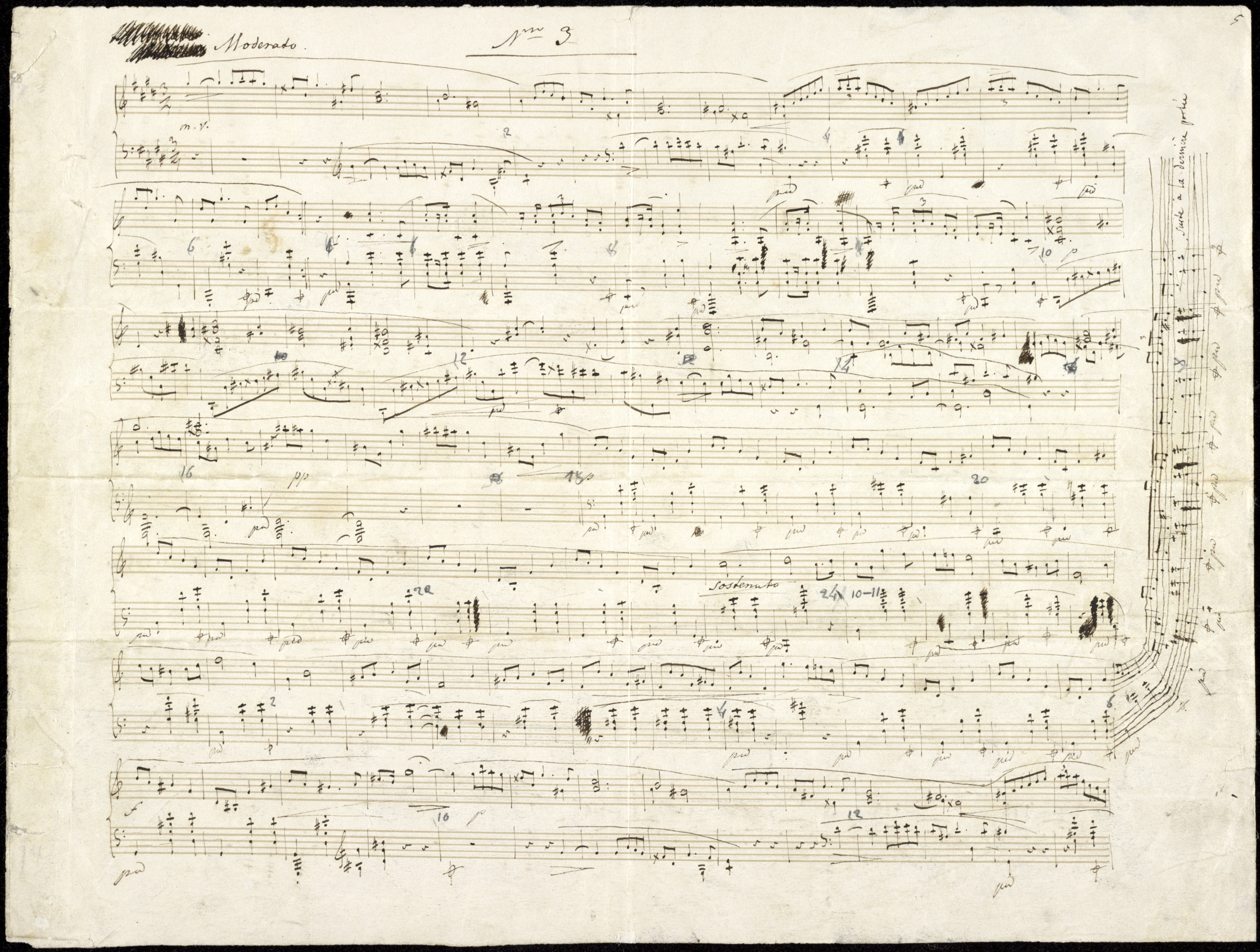



The notation of AI shows the evolution of the accompaniment in these bars. In both bars Chopin started from a typical bass-chord-chord structure, which he modified in b. 64 by replacing the last chord with a transitional F note. At the same time, he was improving the pitch of the bass notes, which he initially wrote as B and e and then moved them an octave lower (B1 and E); eventually, he left B and E. The way the changes are written is typical of drafts: gentle crossings-out or even leaving two versions with none of them having been crossed out. Therefore, it seems that they were introduced at a time when it was already known that the Mazurka had to be rewritten, hence AI could be used to write down new ideas on the go. The corrections/additions in the next three bars are of similar nature: b. 65 and 67 in the R.H., b. 66 in the L.H.
note. At the same time, he was improving the pitch of the bass notes, which he initially wrote as B and e and then moved them an octave lower (B1 and E); eventually, he left B and E. The way the changes are written is typical of drafts: gentle crossings-out or even leaving two versions with none of them having been crossed out. Therefore, it seems that they were introduced at a time when it was already known that the Mazurka had to be rewritten, hence AI could be used to write down new ideas on the go. The corrections/additions in the next three bars are of similar nature: b. 65 and 67 in the R.H., b. 66 in the L.H.
In b. 64 the same two versions that we can see in AI are also written in AF, whereby the earlier one is definitely crossed out. According to us, it proves Chopin's reduced concentration at the time of writing another autograph of the Mazurka.
Compare the passage in the sources »
category imprint: Corrections & alterations; Source & stylistic information
issues: Corrections in A, Chopin's hesitations, Deletions in A, Accompaniment changes, Corrections of AI
notation: Pitch

